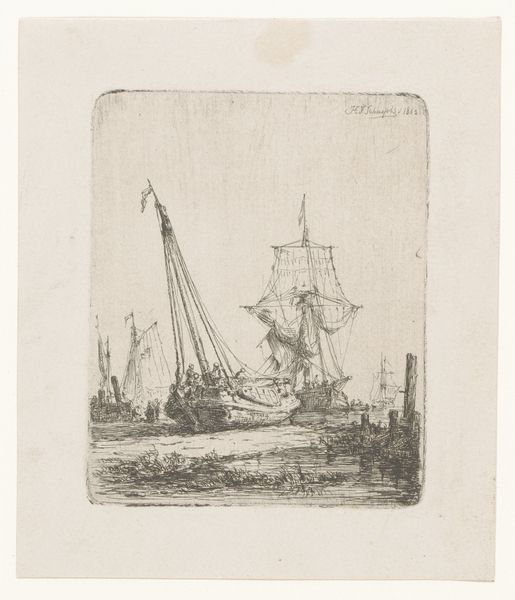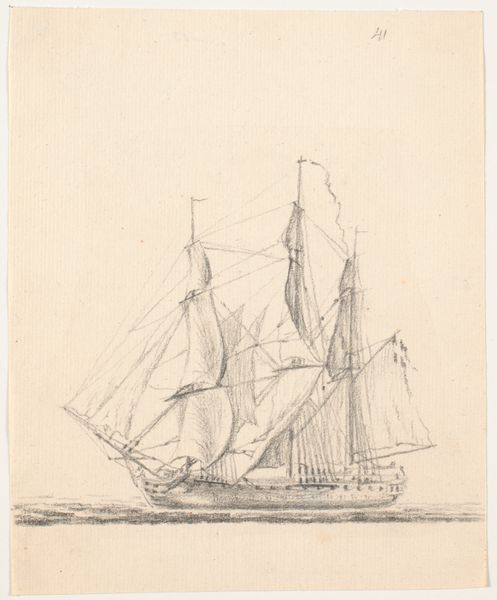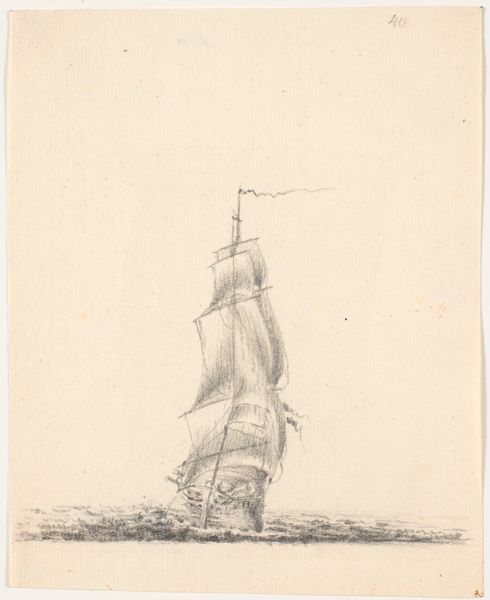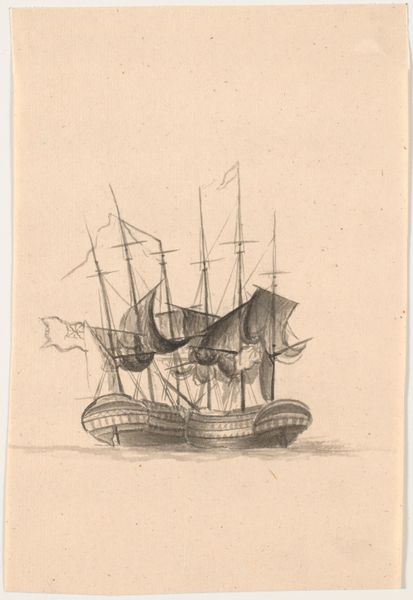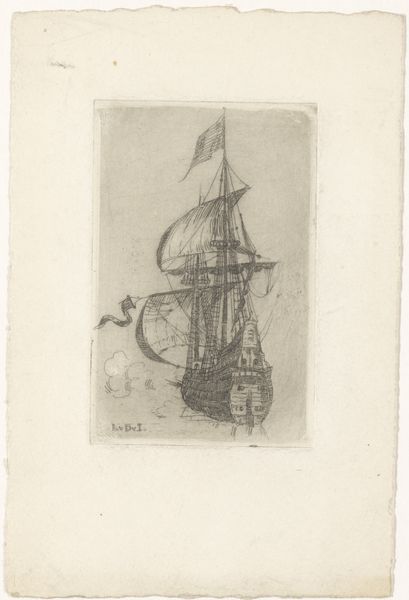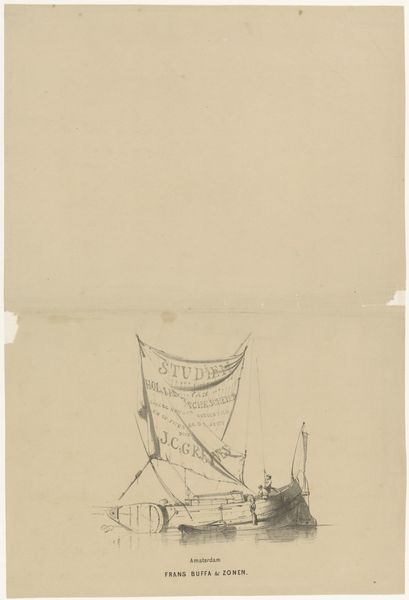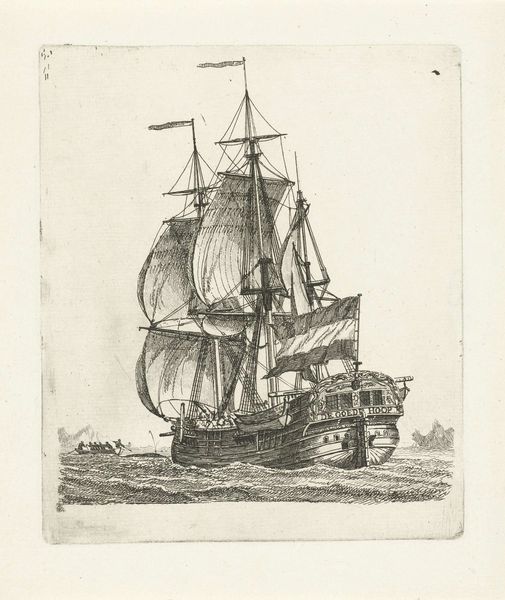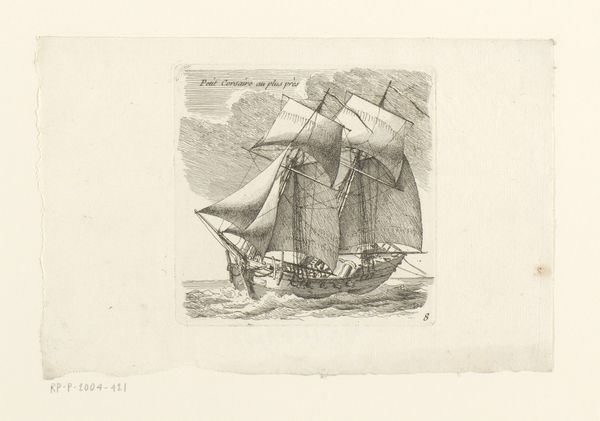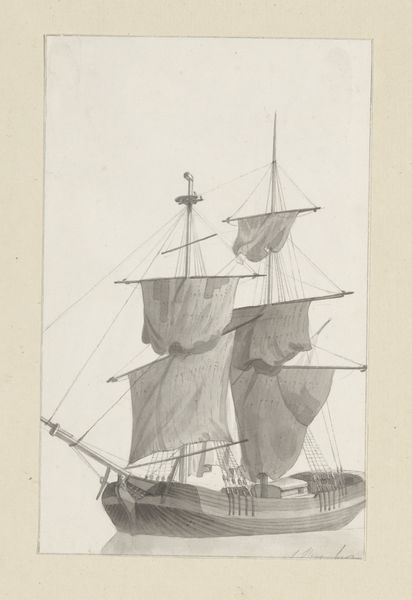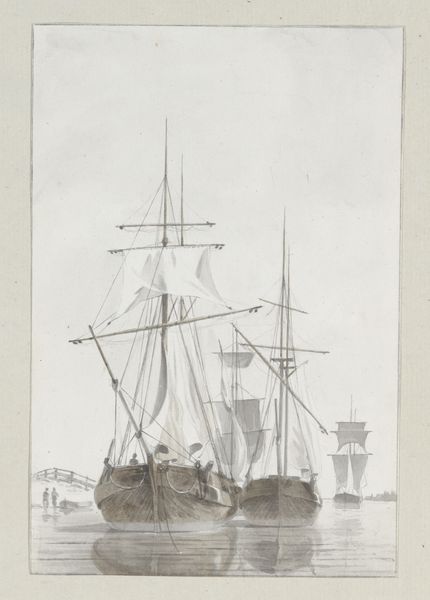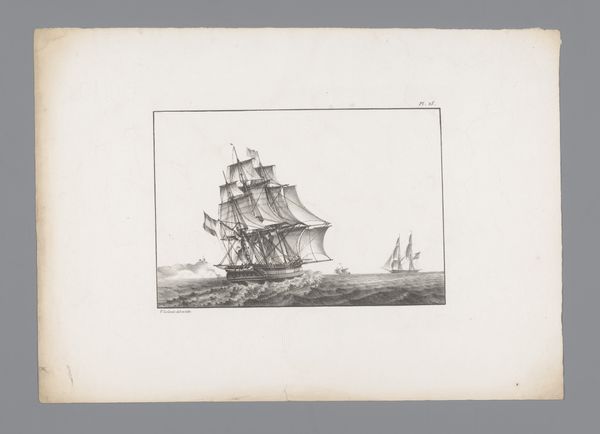
print, etching
# print
#
etching
#
landscape
#
etching
Dimensions: height 133 mm, width 88 mm
Copyright: Rijks Museum: Open Domain
Editor: Here we have Egidius Linnig's "Titelprent met een aangemeerd zeilschip," made in 1842. It's an etching, and there's a lovely delicate quality to the line work, a real sense of detail. It strikes me as quite an ordinary, almost mundane scene. What's your read on it? Curator: For me, it’s all about the printmaking process itself. Etching allowed for the relatively easy reproduction and distribution of imagery. Look closely at how Linnig has used varied line weights. These techniques weren't just about aesthetic effect, they facilitated mass production to create images accessible for broader consumption. The subject matter supports this analysis; maritime scenes like this catered to an emerging middle class interested in themes of trade and exploration. Editor: That's fascinating! So the choice of subject matter and the etching technique are intertwined with socio-economic factors? It wasn’t purely artistic expression? Curator: Exactly! How do we value this object, if not just for its aesthetic, but as a cultural artifact and a piece of the burgeoning 19th-century print industry? Also consider the labour involved. Where and how were these prints sold? How did it support Linnig and others who would have participated in its creation? Editor: That makes me see it so differently. The material becomes almost more important than the image itself, telling a broader story of production. Curator: Precisely. It asks us to reconsider what 'art' can mean beyond individual genius, towards a more collaborative and commercial endeavor. Editor: I’ve learned so much today about understanding artwork beyond the surface! Curator: It is all about seeing beyond the final image into how it was made and consumed in society.
Comments
No comments
Be the first to comment and join the conversation on the ultimate creative platform.
